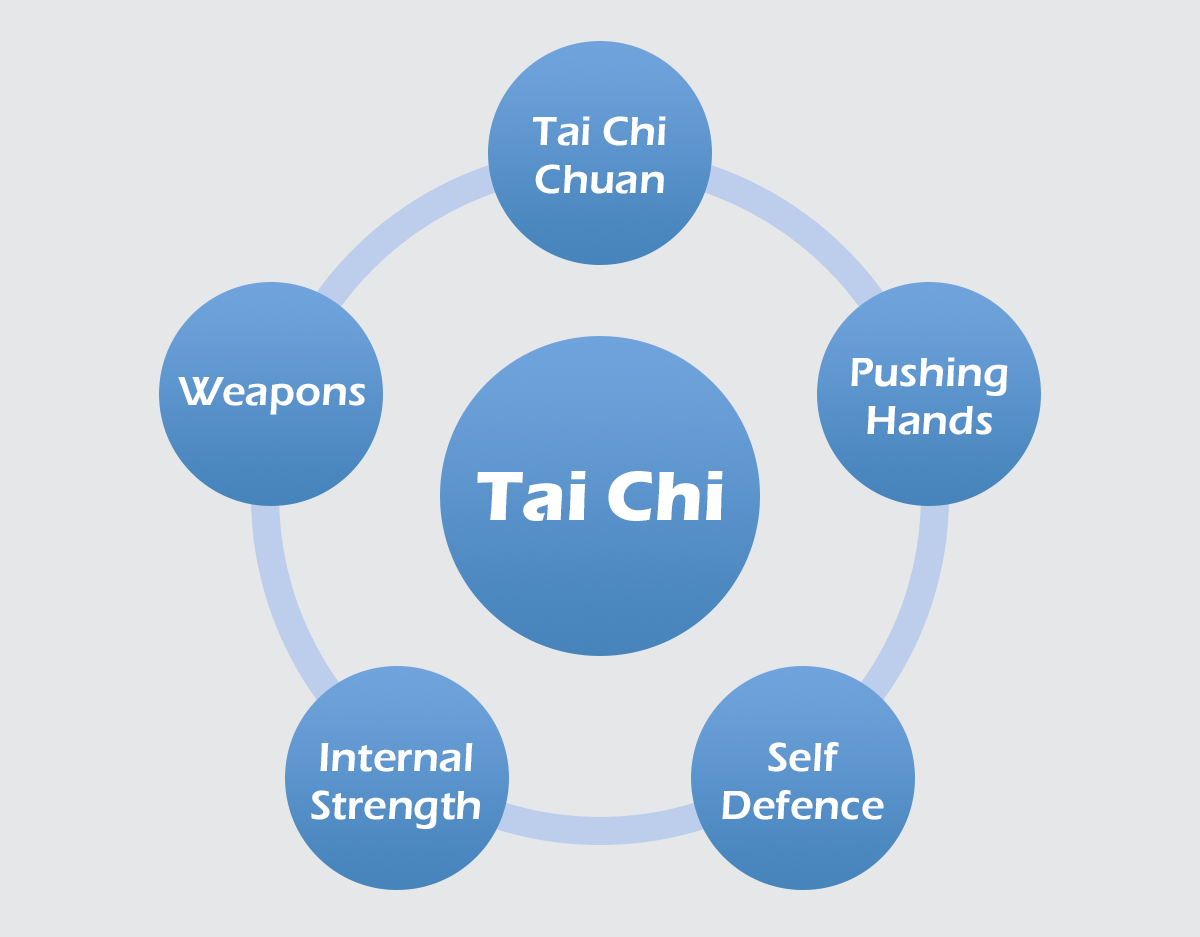
The practical side of the art of Tai Chi consits of five basic component parts which are very much interrelated. These are:-
a) Hand Form(太極拳)
The Hand Form is the most basic, as well as the best known, of the five component parts of Tai Chi Chuan, but knowledge of this alone is insufficient for self-defence purposes.
There are two stages in learning the Hand Form. At first we learn the movements in a simplified, step by step, way known as the ‘Square Form’. This can be compared to teaching a child to write, in that he will be taught first to form block letters. Only when we have mastered this simple method of doing the form can we move on to learn the more intricate ‘Round Form’, which consists of the same techniques as the Square Form, but which is performed in a free and flowing manner. The Round Form is to the Square Form as cursive script is to block letters.
The movements of the Hand Form come in a set sequence, and all have a self-defence application. Slow and gentle practice of the Hand Form by concentrating on the movements will result in tranquility of mind, help relax the body and improve respiration.
b) Pushing Hands(推手)
The purpose of Pushing Hands is to train us in methods of applying techniques to disrupt our opponent’s centre of gravity. Such training will also increase our sensitivity and improve our reactions. Pushing Hands is the key to learning the Self-Defence techniques.
c) Self-Defence(散手)
Once we have reached a certain standard in the Pushing Hands, we can then move on to learn the Self-Defence techniques. These are modified techniques taken from the Hand Form.
Practice with a partner is necessary to develop our ability in using these techniques to defend ourselves and to counter-attack our opponent. We must make these techniques second nature to us, so that in a real situation we will react instinctively and decisively.
d) Internal Strength(內功)
Internal Strength can be described as meditation combined with exercise. Though we are concentrating on maintaining a tranquil state of mind, we are at the same time holding set postures or repeating set movements which are designed to increase our health and strength, and to give us a well-coordinated body that is full of energy.
e) Weapons(兵器)
The three weapons used in Tai Chi Chuan are the straight sword(劍), sabre(刀), and spear(槍). They are usually taught after a certain degree of proficiency has been achieved in the Hand Form and the techniques of Pushing Hands and Self-Defence. The techniques of the Weapon Forms can be adapted for combat purposes in the same way as the techniques of the Hand Form.
These five component parts are so closely interrelated that only by studying all five can we reap the full benefits of practicing Tai Chi Chuan. However, knowledge of the physical movements alone is of limited value, if we lack the knowledge of the theory, strategy and tactics that direct their application.
We hope that this book will serve to develop and spread Tai Chi Chuan as well as to clear up some of the mysteries and misconceptions surrounding the art. Beginners and advanced students of Tai Chi Chuan and other martial arts should find this book a valuable guide containing many useful points which are not to be found in other volumes on the subject.
